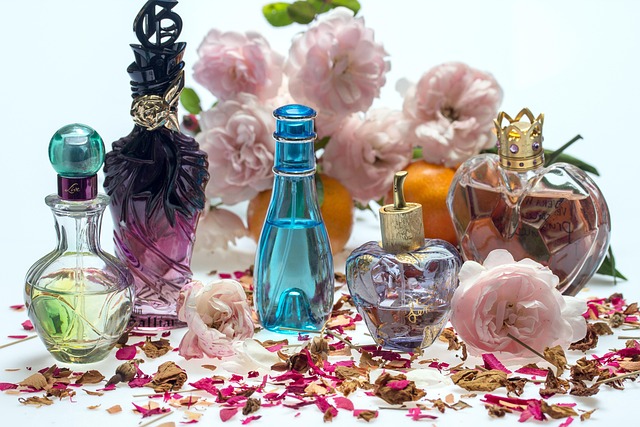The Art of Layering Fragrances: A Scent Symphony
Perfumery has long been considered a fine art, with master perfumers crafting complex scents that evoke emotions and memories. However, in recent years, a new trend has emerged that takes fragrance artistry to the next level: layering. This technique involves combining multiple fragrances to create a unique, personalized scent that is greater than the sum of its parts. The art of layering fragrances has gained popularity among fragrance enthusiasts and casual wearers alike, offering a way to express individuality and creativity through scent. As this practice continues to grow, it challenges traditional notions of how perfumes should be worn and opens up new possibilities for olfactory experiences.

In the Western world, fragrance layering began to gain traction in the 1970s and 1980s, when perfume houses started encouraging customers to combine different scents from their collections. However, it wasn’t until the late 2000s and early 2010s that layering truly took off as a mainstream trend, fueled by social media and a growing desire for personalization in the beauty industry.
The Science Behind Scent Combinations
Understanding the science of fragrance layering is crucial to creating successful combinations. Perfumes are typically composed of top notes (the initial scents that evaporate quickly), middle notes (the heart of the fragrance), and base notes (the long-lasting foundation). When layering fragrances, it’s important to consider how these different notes will interact with each other.
Some scents naturally complement each other, such as citrus and floral notes or woody and spicy aromas. Others may clash or overpower one another. The key is to find a balance that allows each fragrance to shine while creating a harmonious overall scent. Factors such as skin chemistry, environmental conditions, and the order in which fragrances are applied can all affect the final result.
Techniques for Effective Layering
There are several approaches to fragrance layering, each offering unique possibilities for scent creation. One common technique is to layer different concentrations of the same fragrance family, such as combining an eau de parfum with its corresponding body lotion or oil. This method intensifies the scent while maintaining its original character.
Another popular approach is to combine contrasting fragrances to create a more complex aroma. For example, pairing a fresh, aquatic scent with a warm, oriental fragrance can result in an intriguing blend of cool and spicy notes. Some enthusiasts even experiment with layering three or more fragrances, carefully building a scent profile from the bottom up.
Timing is also crucial in fragrance layering. Applying heavier, more tenacious scents first and lighter fragrances on top can help ensure that all notes are detectable throughout the day. Additionally, allowing each layer to dry before applying the next can prevent the scents from blending too much and losing their individual characteristics.
The Rise of Layering-Specific Products
As the trend has grown, many perfume houses and beauty brands have begun developing products specifically designed for layering. These often include lighter, more simplistic fragrances that serve as a base or “primer” for other scents. Some companies have even created entire collections dedicated to layering, with fragrances formulated to complement each other seamlessly.
Body products such as scented lotions, oils, and hair mists have also become popular tools for layering, allowing users to build their scent from the ground up. These products often contain lower concentrations of fragrance, making them ideal for subtle layering without overwhelming the senses.
The Cultural Impact of Fragrance Layering
The rise of fragrance layering has had a significant impact on the perfume industry and consumer behavior. It has challenged the traditional notion of a signature scent, encouraging individuals to experiment and create their own unique fragrance identities. This shift has led to a more playful and creative approach to perfume wearing, with consumers viewing fragrances as a form of self-expression rather than a fixed aspect of their personal style.
Moreover, the trend has influenced how perfumes are marketed and sold. Many retailers now offer layering workshops or consultations, guiding customers through the process of combining scents. Online communities and social media platforms have also emerged as spaces for fragrance enthusiasts to share their layering experiences and recommendations, fostering a sense of community around this olfactory art form.
The Future of Fragrance Layering
As the art of layering continues to evolve, we can expect to see further innovations in the fragrance industry. Some experts predict the development of more sophisticated layering systems, possibly involving technology that allows users to precisely control the release of different scent notes throughout the day.
There is also growing interest in the potential therapeutic benefits of fragrance layering. Some researchers are exploring how specific scent combinations might be used to enhance mood, reduce stress, or improve cognitive function. This intersection of perfumery and aromatherapy could open up new avenues for both the beauty and wellness industries.
In conclusion, the art of layering fragrances represents a fascinating evolution in how we approach and experience scent. By empowering individuals to become their own perfumers, this trend has transformed fragrance from a finished product into a creative medium. As the practice continues to gain popularity and sophistication, it promises to reshape our relationship with scent, offering endless possibilities for personal expression and olfactory exploration.





